While classical and acoustic guitars may appear similar at first glance, with six strings, a soundhole, and tuning pegs, there are significant differences that impact their sound, playability, and ideal musical genres. Understanding these distinctions is crucial whether you’re a beginner guitarist or looking to expand your instrument collection. Let’s explore the key differences between classical and acoustic guitars.
Shape and Body Size
Acoustic guitars commonly come in the popular dreadnought shape, known for its robust and powerful sound, alongside smaller parlor sizes, favored for their comfortable playability and balanced tone. Parlor guitars are generally more compact than classical guitars, though variations exist depending on the acoustic guitar manufacturer and model. Classical guitars typically maintain a more consistent body size, contributing to their characteristic warm and resonant sound.
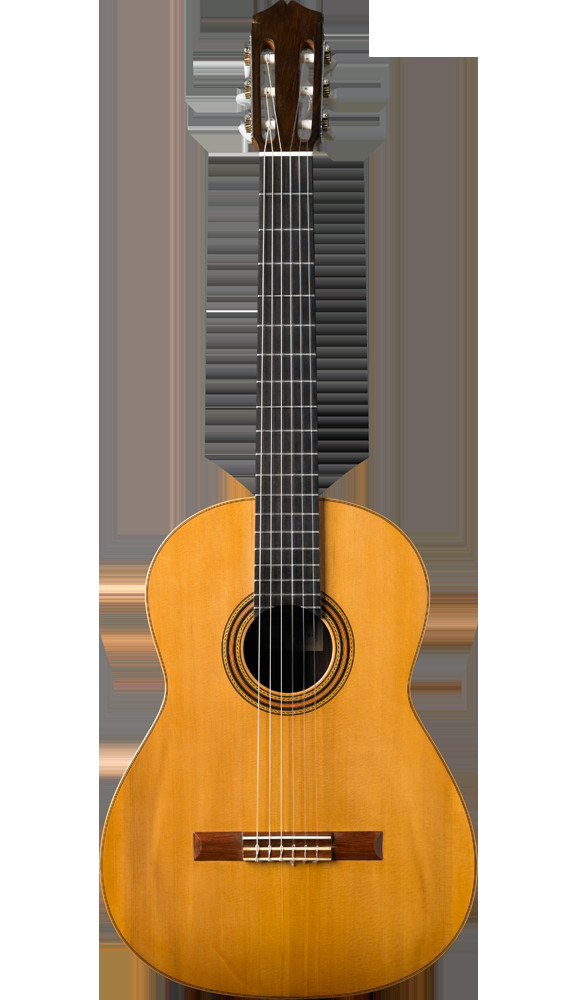 Classical guitar and acoustic guitar shapes comparison
Classical guitar and acoustic guitar shapes comparison
Neck Width and Fretboard
The neck of a classical guitar is generally wider than that of an acoustic guitar. This wider neck is designed to accommodate fingerstyle playing, a technique common in classical and flamenco music, providing ample space between strings for intricate finger movements. Acoustic guitars, intended for both strumming chords and fingerpicking, typically have narrower necks and tighter string spacing, which many players find easier for chord transitions and faster playing styles. Another notable difference is that classical guitars often lack fret markers on the fretboard, which can be a challenge for beginners but is standard in classical guitar tradition.
Bridge Design
The bridge is another area where classical and acoustic guitars diverge. Classical guitars utilize a tie-on or wrap-around bridge. With this system, the nylon strings are tied around the bridge in a knot to secure them, a method similar to that used on ukuleles. While traditionally tie-on, some classical guitars now accommodate ball-end classical strings for easier string changes. In contrast, acoustic guitars feature a bridge with bridge pins or pegs. These pegs firmly hold the steel strings in place, offering a robust and straightforward string attachment system designed for the higher tension of steel strings.
Strings: Nylon vs. Steel
The most fundamental difference between classical and acoustic guitars lies in the strings they use. Classical guitars are strung with nylon strings, whereas acoustic guitars use steel strings. This difference in string material is the primary factor behind their distinct sounds and playing experiences.
Nylon strings are significantly thicker and produce a mellow, warmer, and softer tone compared to steel strings. The higher-pitched strings (G, B, high E) are made from solid nylon, while the bass strings (E, A, D) consist of a nylon multifilament core wrapped with silver-plated copper. Nylon strings are gentler on the fingertips and have a smooth, plastic-like feel, making them often recommended for beginners as they are less likely to cause finger pain in the initial stages of learning. The sound of nylon strings is particularly well-suited for classical, flamenco, and Spanish guitar music.
Steel strings on acoustic guitars generate a bright, crisp, and resonant sound, often described as twangy. This brighter tone is much louder and projects further than the softer sound of nylon strings. Acoustic guitar strings are made from various metals and alloys, including bronze and phosphor bronze, each contributing to subtle tonal variations. Steel strings are thinner than nylon strings and, while contributing to a brighter sound, can feel sharper on the fingers, especially for new players. The sound of steel-string acoustic guitars is prevalent in genres like rock, folk, blues, and country music.
Types of Strings for Each Guitar
Classical Guitar Strings
Ernie Ball offers a range of classical guitar strings, each designed to produce unique tonal qualities and cater to different playing styles.
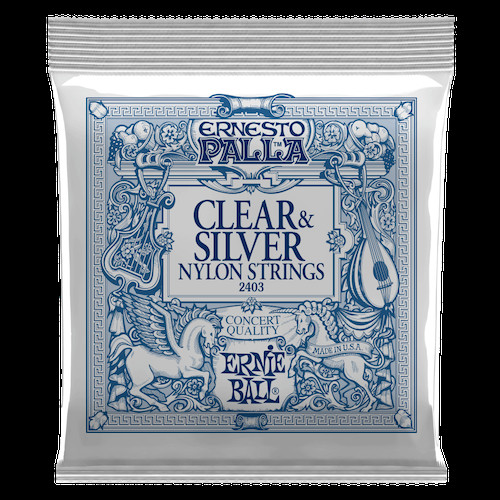 Ernie Ball Ernesto Palla Clear and Silver Nylon Classical Guitar Strings
Ernie Ball Ernesto Palla Clear and Silver Nylon Classical Guitar Strings
Ernesto Palla Clear & Silver Nylon Classical Guitar Strings
These clear and silver nylon strings are a popular choice for classical guitarists. Known for their concert quality, they deliver a smooth, rich tone with exceptional clarity and performance, ideal for traditional classical pieces.
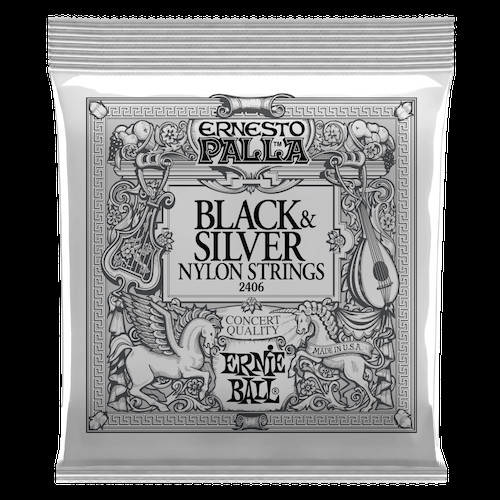 Ernie Ball Ernesto Palla Black and Silver Nylon Classical Guitar Strings
Ernie Ball Ernesto Palla Black and Silver Nylon Classical Guitar Strings
Ernesto Palla Black & Silver Nylon Classical Guitar Strings
Crafted from a different nylon composition, black nylon strings produce a warmer, purer sound with enhanced treble overtones. These strings are favored by folk guitarists who seek a warmer nylon sound.
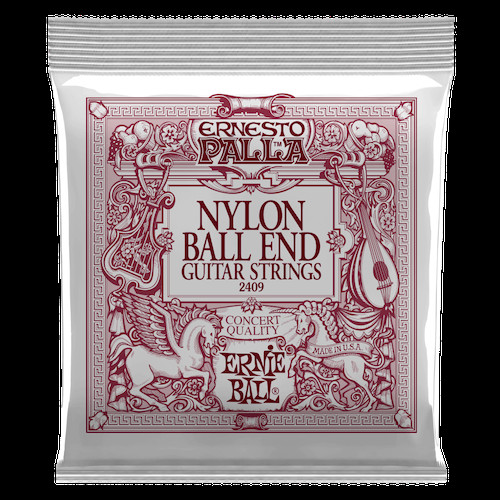 Ernie Ball Ernesto Palla Black and Gold Ball-End Nylon Classical Guitar Strings
Ernie Ball Ernesto Palla Black and Gold Ball-End Nylon Classical Guitar Strings
Ernesto Palla Black & Gold Ball-End Nylon Classical Guitar Strings
Featuring gold wound basses made of 80/20 bronze wrapped around a nylon multifilament core, these strings offer a smooth, rich tone. The ball-end construction provides a convenient and faster installation compared to traditional tie-end strings.
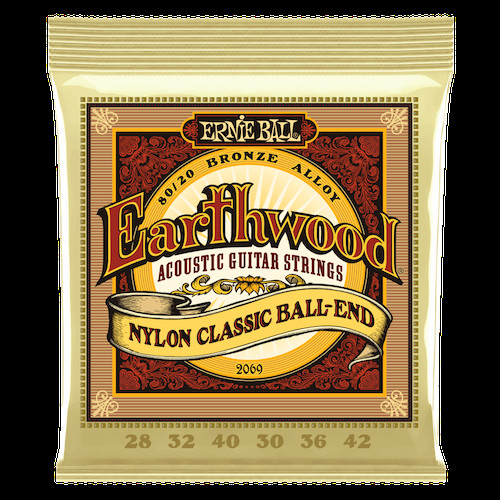 Ernie Ball Earthwood Folk Nylon, Clear & Gold Ball End, 80/20 Bronze Acoustic Guitar Strings
Ernie Ball Earthwood Folk Nylon, Clear & Gold Ball End, 80/20 Bronze Acoustic Guitar Strings
Earthwood Folk Nylon, Clear & Gold Ball End, 80/20 Bronze Acoustic Guitar Strings
Ernie Ball Earthwood Folk Nylon strings combine a solid nylon clear filament for the plain strings, producing rich treble tones with a percussive attack, and 80/20 bronze wrapped around a multifilament nylon core for the wound strings.
Acoustic Guitar Strings
Ernie Ball also provides a wide selection of acoustic guitar strings, designed for different tones and playing preferences.
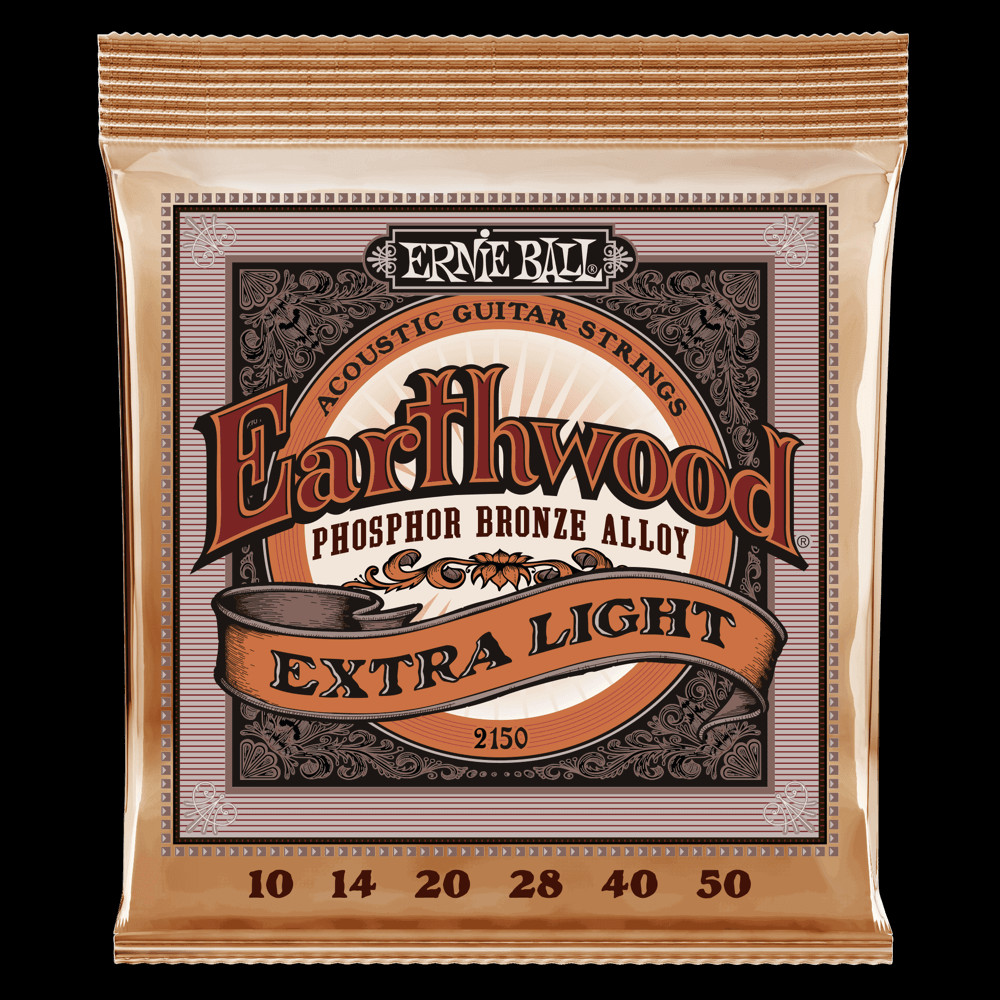 Ernie Ball Earthwood Acoustic Guitar Strings
Ernie Ball Earthwood Acoustic Guitar Strings
Earthwood Acoustic Guitar Strings
Earthwood acoustic guitar strings are available in both Phosphor Bronze, known for a mellow, ringing sound, and 80/20 Bronze, which delivers crisp and pleasing overtones, catering to various acoustic tones.
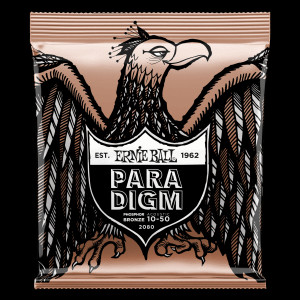 Ernie Ball Paradigm Acoustic Guitar Strings
Ernie Ball Paradigm Acoustic Guitar Strings
Paradigm Acoustic Guitar Strings
Paradigm acoustic guitar strings, offered in 80/20 and Phosphor Bronze, provide exceptional strength and extended string life while maintaining the authentic Earthwood tone and feel, ideal for players seeking durability and quality.
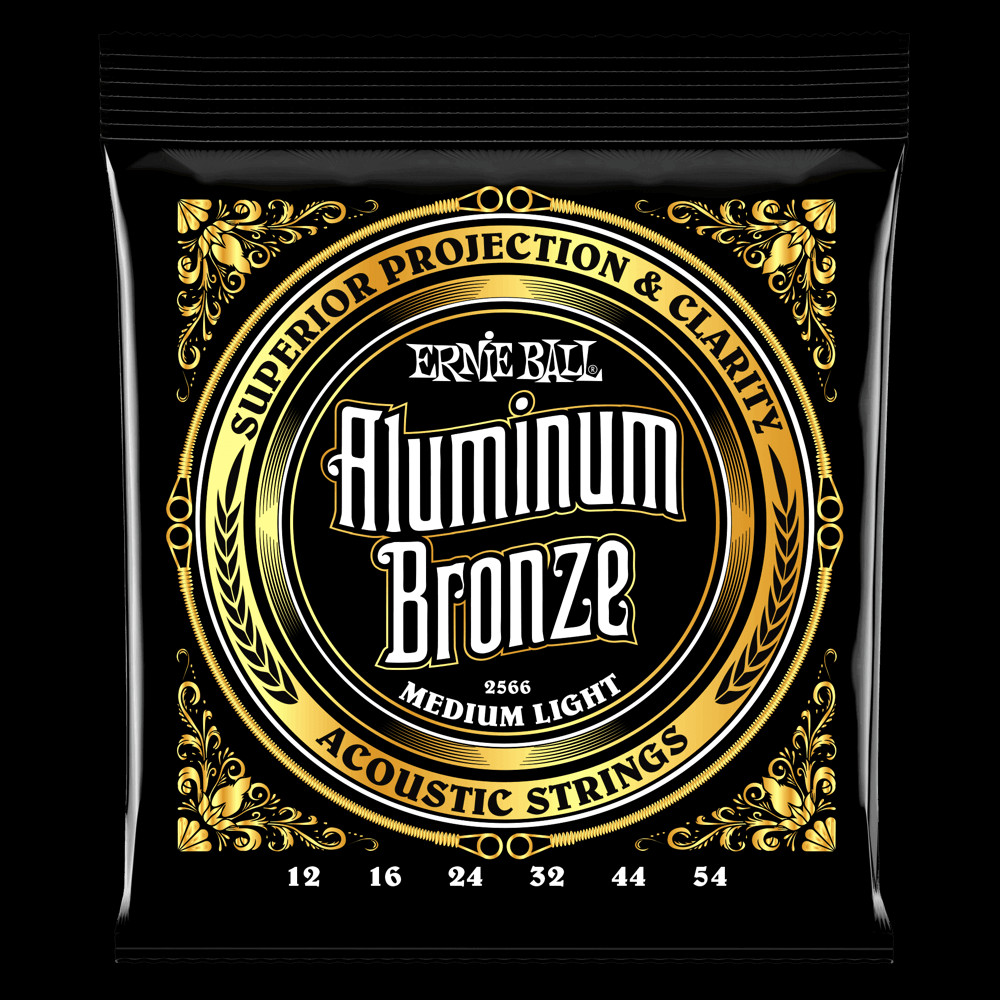 Ernie Ball Aluminum Bronze Acoustic Guitar Strings
Ernie Ball Aluminum Bronze Acoustic Guitar Strings
Aluminum Bronze Acoustic Guitar Strings
Aluminum Bronze Acoustic Guitar Strings from Ernie Ball offer enhanced projection and clarity compared to traditional bronze strings, along with improved corrosion resistance. They feature Maraging Steel hex cores and Aluminum Bronze wrap wire for pronounced lows and brilliant highs.
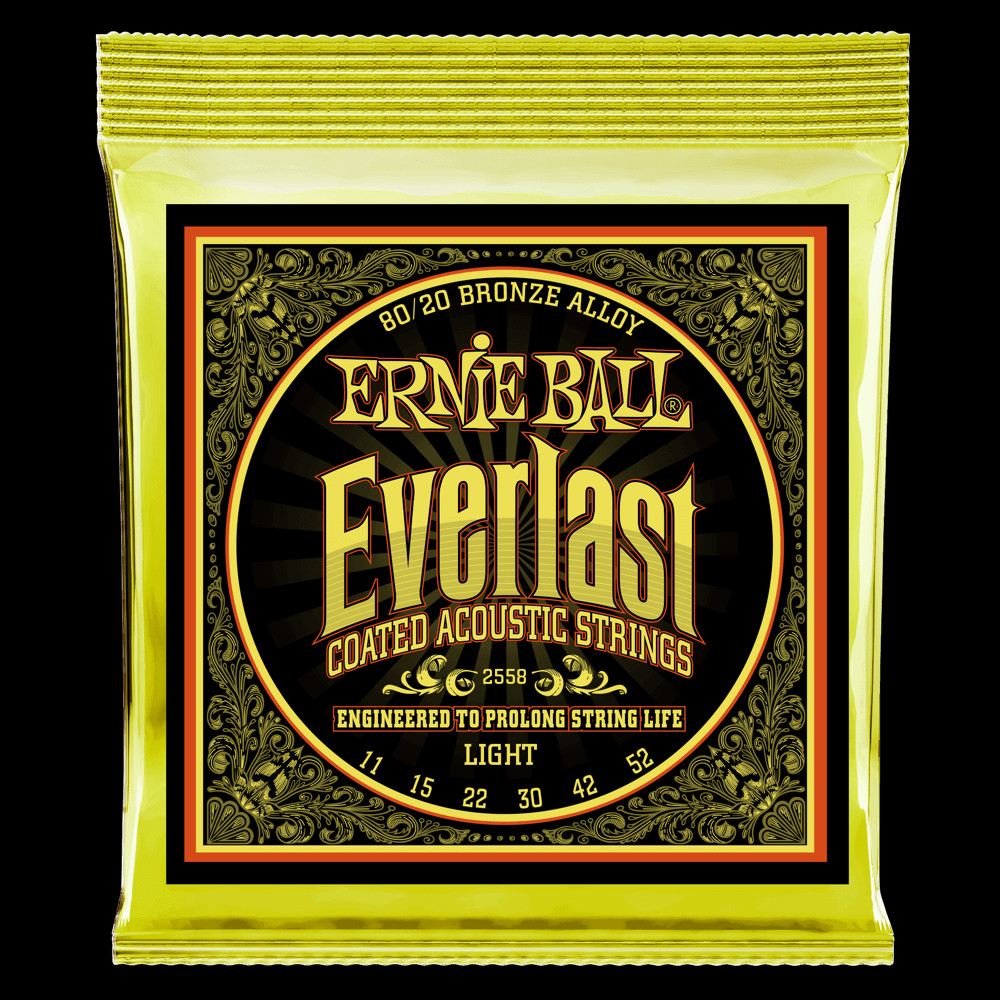 Ernie Ball Everlast Coated Acoustic Strings
Ernie Ball Everlast Coated Acoustic Strings
Everlast Coated Acoustic Strings
Everlast coated acoustic strings, available in 80/20 and Phosphor Bronze, utilize nanotechnology to repel moisture and oils that can degrade tone. This coating on both the inner core and outer wrap wire provides ultimate protection without sacrificing tone or feel, extending string life and maintaining sound quality.
Choosing between a classical and an acoustic guitar depends largely on your musical preferences and playing style. If you are drawn to classical, flamenco, or nylon-string folk music, a classical guitar is the natural choice. For those interested in rock, pop, blues, country, or steel-string folk music, an acoustic guitar is typically more appropriate. Both guitar types offer unique sonic landscapes and playing experiences, making the choice a personal journey into the world of guitar music.
